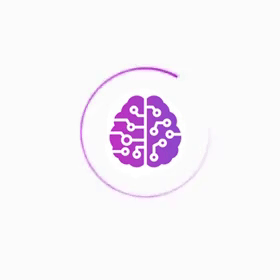
- Posted by : Yurii
- Action
- Creativity
- Future
- Learn
- Models
- Research
- Society
- Trends
- Uncategorized
OpenAI has once again pushed the boundaries of artificial intelligence by unveiling a groundbreaking multimodal model that doesn’t just see — it understands. Dubbed GPT-4o (with “o” for “omni”), the new AI system marks a significant evolution in how machines interact with the world, offering real-time reasoning across text, images, and audio.
Multimodality in Action
GPT-4o is designed to process multiple types of data simultaneously, making it capable of interpreting not just words, but the relationships between objects in an image, tone in a voice, or the meaning of a chart. During a live demonstration, OpenAI showed the model responding to a math problem sent as a photo. Instead of simply describing the image, GPT-4o identified the problem, solved it, and explained the steps — all in natural language.
This capacity goes far beyond traditional image captioning or object recognition. GPT-4o can infer context, understand diagrams, detect emotions from facial expressions, and even participate in multi-turn conversations about what it “sees.” OpenAI describes this as the closest thing yet to real-time human-like perception and response.
What’s New Compared to GPT-4
While GPT-4 and earlier iterations of OpenAI’s models were text-focused, GPT-4o introduces a more seamless integration of visual and auditory input. The company notes that while GPT-4 could analyze images, its performance was slower and less interactive. GPT-4o can engage in spoken dialogue while referencing visual information, transforming tutoring, accessibility, and entertainment.
GPT-4o’s ability to combine spoken dialogue with visual information could revolutionize tutoring, accessibility, and entertainment.
One striking example: a user sends a photo of a spreadsheet, and GPT-4o explains what’s happening in the data, identifies anomalies, and offers insights — without the need to type anything.
Real-Time Conversational AI
The model features voice interaction with 232ms latency, mimicking human response time in conversation.
This enables AI companions to interpret tone, recognize expressions, and respond, revolutionizing customer service and education.
The naturalness of these interactions, according to OpenAI researchers, stems from training the model on unified data across modalities rather than stitching together separate systems for text, image, and speech. In other words, GPT-4o doesn’t just combine different tools — it’s built from the ground up to think across them.
Ethical and Practical Considerations
As with any major leap in AI capability, OpenAI’s announcement raises ethical questions. How will this affect jobs that rely on visual analysis? What safeguards are in place to prevent misuse? OpenAI tested GPT-4o for bias, hallucinations, and harmful behavior, with initial access limited to developers and trusted partners.
GPT-4o has been tested for bias, hallucinations, and harm, with access restricted to developers and trusted partners.
In the long term, OpenAI envisions using models like GPT-4o to assist with complex workflows, empower people with disabilities, and enhance creative work. However, it acknowledges the need for regulatory frameworks and public input as such systems become more capable and pervasive.
Competitive Landscape
OpenAI’s release comes amid increasing competition in the AI space. Google, Meta, and Anthropic are all developing their own multimodal models. Google’s Gemini and Meta’s LLaVA have demonstrated similar capabilities, though OpenAI’s real-time voice integration is considered a standout feature.
This announcement is part of OpenAI’s strategy to maintain AI leadership, expanding its partnership with Microsoft and integrating models into tools like Word and Excel.
OpenAI aims to maintain AI leadership through this announcement, expanding its partnership with Microsoft and integrating models into Word and Excel.
What It Means for the Future
GPT-4o marks a technological milestone, shifting how we imagine human-computer interaction. Users may interact with AI through speech, gestures, and visuals, bypassing screens.
GPT-4o represents a shift in human-computer interaction, where users interact with AI via speech, gestures, and visuals instead of screens.
Users may communicate with AI systems via voice and gestures, receiving intelligent responses without screens or keyboards.
Whether you’re a student, doctor, or visually impaired, GPT-4o’s ability to reason with images makes AI more intuitive and useful.
GPT-4o’s image reasoning helps students, doctors, and visually impaired users interact with AI in a more intuitive, human way.
